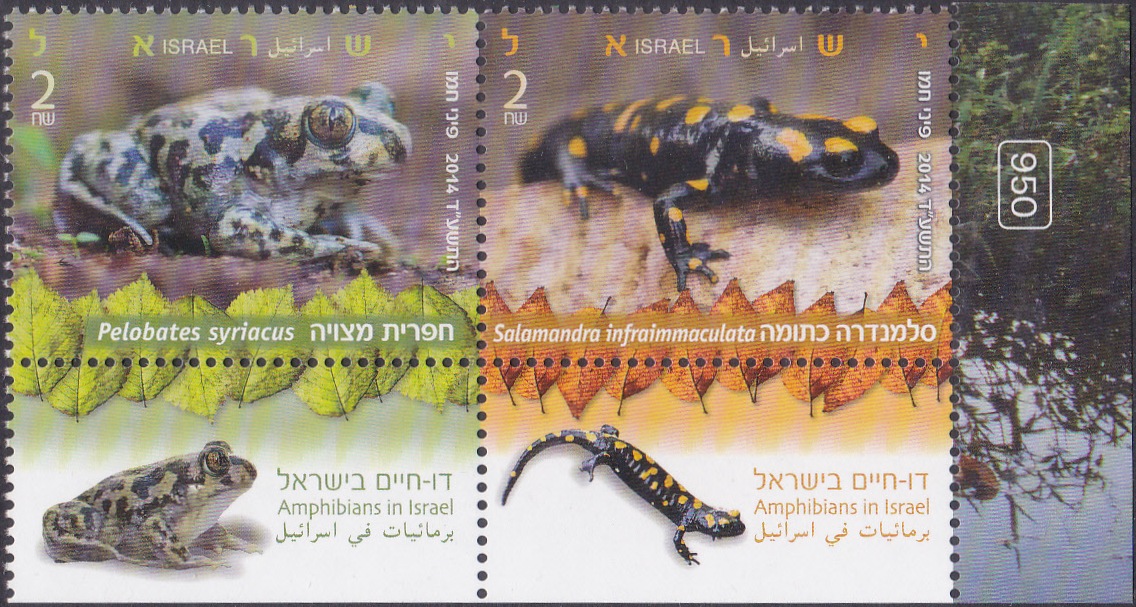
Egypt-Israel Peace Treaty
A commemorative postage stamp on the Signing of Peace Treaty between Israel and Egypt, March 26 :
 Issued by Israel
Issued by Israel
Issued on 26 Mar, 1979
Designer : The stamp & the souvenir sheet were designed by R. & A. Hecht
Photos : A. Ganor
Type : Stamp, Mint Condition
Colour : Multi colour
Denomination : 10 Pound
About :
- Peace has always been the supreme Jewish ideal, to be expressed both in the relationship between individuals and between groups – especially nations. From its outset, Judaism stressed this virtue in its scale of values, and its significance was further accentuated by the external circumstances of Jewish life. In ancient times, the Jews, as a small nation surrounded by great powers, needed peace, while subsequently during the many centuries of the Diaspora, as a scattered and frequently persecuted minority, they continued to yearn for peace. Any contravention of peace always boded tragedy for the Jews.
- The Hebrew for peace – “Shalom” – became one of the most important words in the Jewish vocabulary. It derives from a root meaning “to be whole, or complete” and it has always been the standard Jewish greeting – the highest wish to one’s fellow-man.
- Already in the Bible (where “peace” is mentioned over 200 times), the special Jewish attitude to peace emerges. It is not merely the absence of war but is a positive concept – mutual help and trust between man and man, the wellbeing and prosperity of nations. “Seek peace and pursue it” says the Psalmist and this became a common maxim. Moses’ brother Aaron was seen as the embodiment of peace and therefore as a prototype to be emulated.
- The vision of universal peace, first conceived by the Biblical prophets has served as an inspiration to mankind. The motto outside the United Nations building in New York is taken from Isaiah’s description of the era of perfection when “they shall beat their swords into plowshares and their spears into pruning hooks: Nation shall not lift up sword against nation, neither shall they learn war any more”.
- For the rabbis of the Talmudic Era, peace constituted one of the most exalted of ideals. The stability and happiness of any community, they said, could only be assured when it rested on a foundation of peace. “By three things the world is preserved – by truth, by judgement and by peace” is one of their most frequently quoted sayings, but is one of many examples that can be cited. Scripture, we are told, was only given to mankind in order to establish peace, while peace is the climax of all blessings. Especial praise is bestowed on the peacemaker, while the essential role of scholars is to bring peace to the world. The rabbinic teaching is summarized in the dictum “Great is peace, because all blessings are contained in it”.
- A number of rabbinic works were written which were devoted entirely to the subject of peace. Best-known is the second-third century “Tractate on Peace”, in which each section begins with the words “Great is Peace”. Its subject-matter is the centrality of peace in Jewish thought – between man and man, between nation and nation, and even cosmically (the celestial realm and angels, it is explained, could not function without it). Its saying “When the Messiah is revealed, his first tidings will be of peace” reflects a widespread belief that international peace is part of a utopian messianism. The first act to be expected of the Messiah – the “Prince of Peace” – was the institution of universal peace.
- Peace is a keynote of the Jewish liturgy. Every major blessing and prayer ends with a petition for peace. Thus the blessing of the priests, dating back to Temple times and still recited in the synagogue, concludes “May the Lord turn His face unto thee – and grant thee peace”.
- The passion for peace as the greatest good runs through all Jewish thought and writings. Post-talmudic thinkers dwelt on its positive aspects as representing a dynamic striving for universal harmony. It is seen as one of the main ethical values, motivated by the active pursuit of human brotherhood, social justice and truth – extending to all mankind.
- To modern Jewish thinkers of all backgrounds, only the peace-loving Jew is a true follower of the prophets. The greatest sacrifice, they held, should be made in order to avoid war. They point out that the Jewish religion, history and mission all pledge the Jew to peace. Peace is seen as a natural law – “one mountain and another can never get together but one man and another can”.
- The traditional Jewish longing for peace has only been intensified in the State of Israel where it was regarded as tragic that the re-establishment of a Jewish state could only be accomplished through fighting and that its subsequent existence should necessitate further wars. The prospect of a peace agreement with any of its neighbours engendered a great feeling of hope in the country, recalling the saying of the eighteenth century rabbi, Nachman of Bratslav: “Whenever a treaty of peace is signed, God is present”.
- The Western Wall in Jerusalem has for nineteen centuries been the Jews’ holiest site as the only remaining part of the Temple. Jews would pray in front of it and write down their dearest wish on a piece of paper which they would stuff into one of its crevices. The stamp shows a crevice in the wall with a white sheet of paper, symbolising the dearest wish of an entire people – Peace.
- Dr. Geoffrey Wigoder
Subscribe
Login
0 Comments







